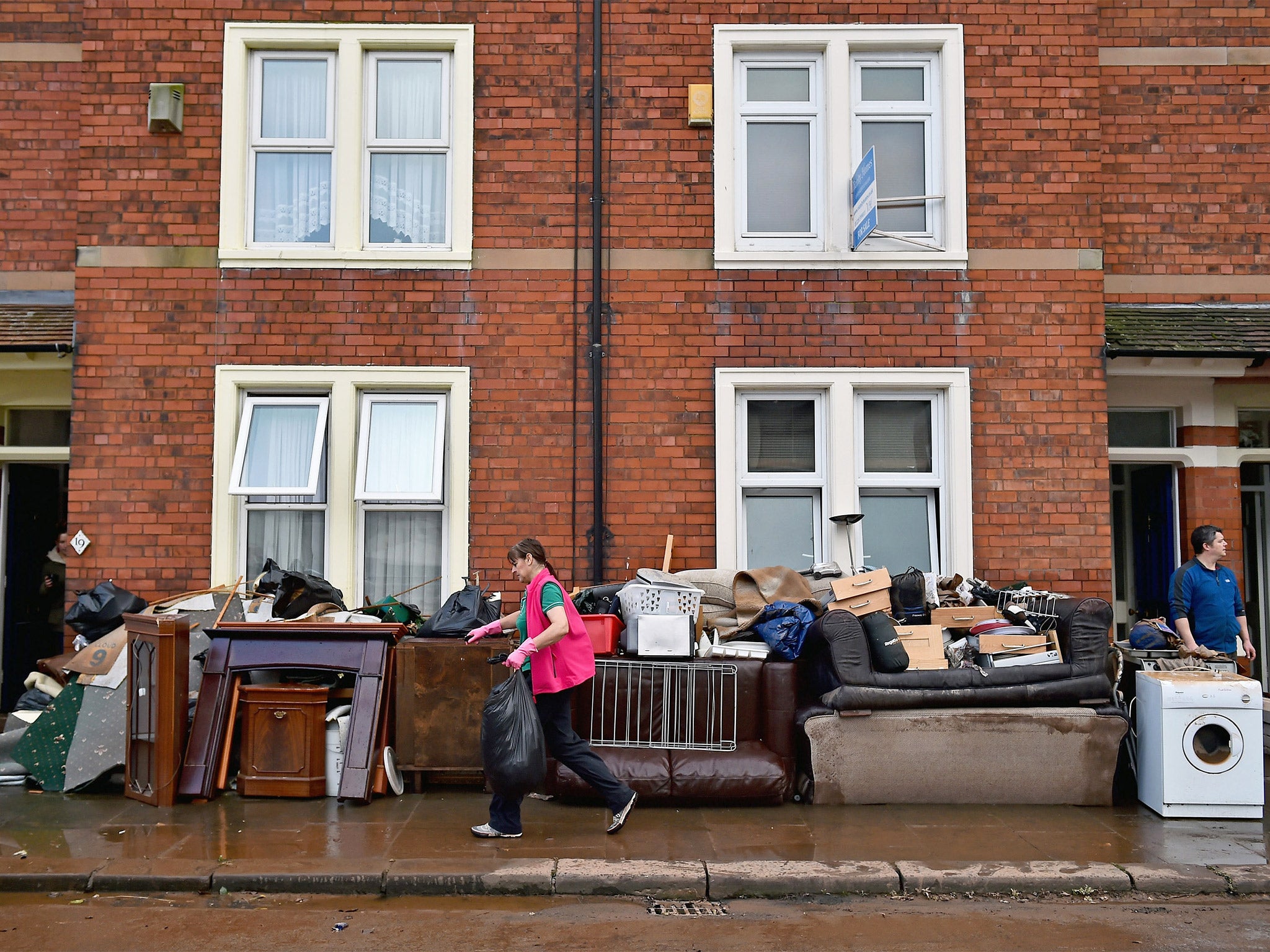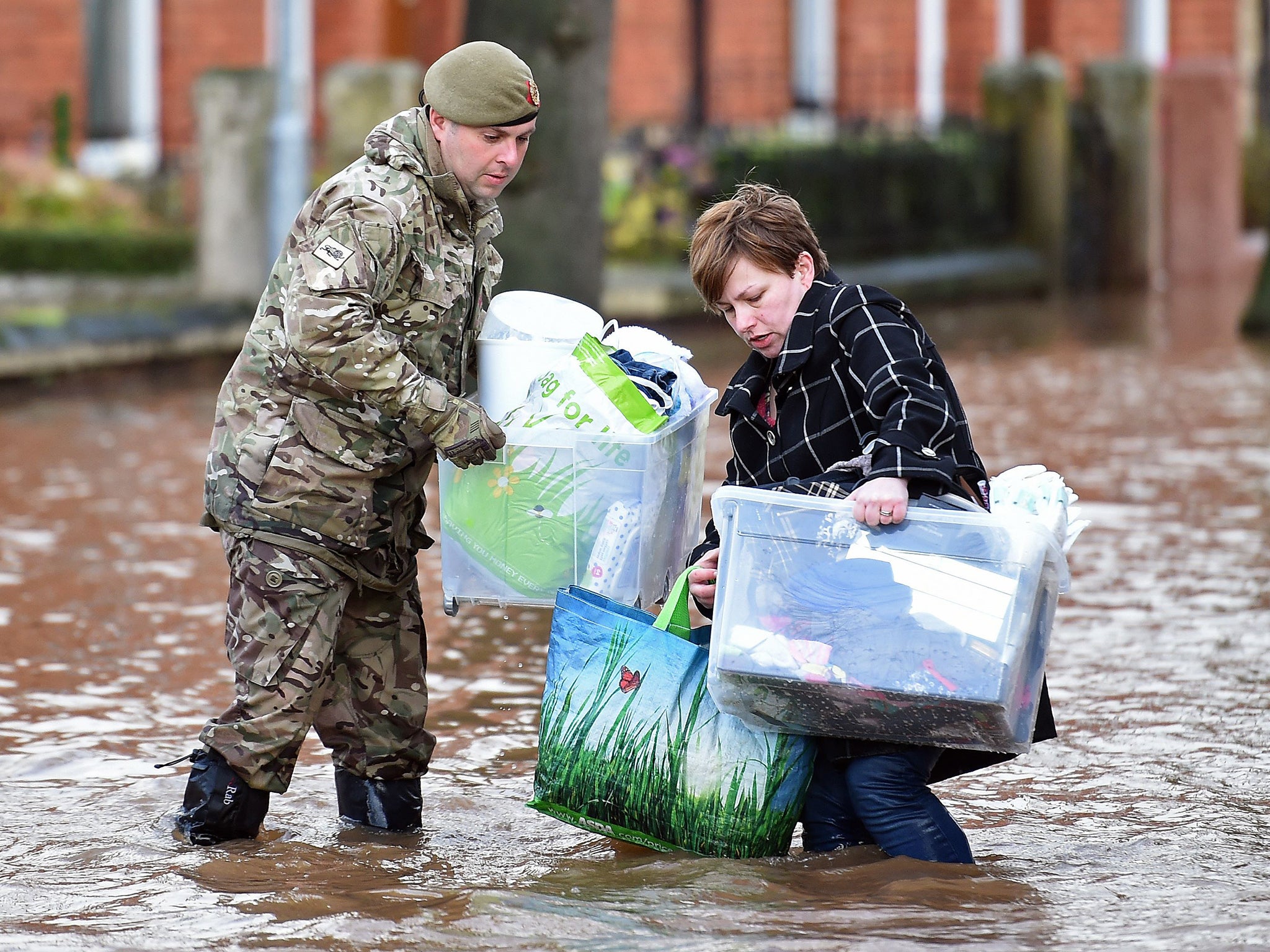Storm Desmond: Scale of destruction laid bare with streets transformed into rubbish dumps
Sofas, chairs, tables, even doors blown off by gale force winds piled up in front yards as major clear-up operations begin

Your support helps us to tell the story
From reproductive rights to climate change to Big Tech, The Independent is on the ground when the story is developing. Whether it's investigating the financials of Elon Musk's pro-Trump PAC or producing our latest documentary, 'The A Word', which shines a light on the American women fighting for reproductive rights, we know how important it is to parse out the facts from the messaging.
At such a critical moment in US history, we need reporters on the ground. Your donation allows us to keep sending journalists to speak to both sides of the story.
The Independent is trusted by Americans across the entire political spectrum. And unlike many other quality news outlets, we choose not to lock Americans out of our reporting and analysis with paywalls. We believe quality journalism should be available to everyone, paid for by those who can afford it.
Your support makes all the difference.The sheer scale of destruction left behind by Storm Desmond has been laid bare with streets transformed into rubbish dumps as families finally began the painful task of emptying broken homes.
Sofas, chairs, tables, even doors blown off by gale force winds piled up in front yards as major clear-up operations began across the north west.
Cumbria Police said its estimated worst-case scenario was as many as 6,425 homes were flooded in the county after the storm struck. St George’s Church in Kendal, one of the worst areas affected, offered free cleaning kits along with a free lunch for locals.
Gareth Weber, who runs the Greystone Community Centre in Carlisle which has been shelter to dozens of people, said local support evoked “the Dunkirk spirit”.
Remembering the floods of 2005, he said: “We have done it once, we can do it again. We have been more organised this time. We knew what people were going to need.”
More than 7,000 donations have been made to a flood appeal, launched by the Cumbria Community Foundation, to raise funds to support the individuals and communities devastated by the storms raising over £400,000. The Foundation committed £50,000 from its own funds to prime the appeal and has been overwhelmed with support.
The Queen took to Twitter to express sympathy for the victims and thank the emergency services for their work. David Cameron pledged the Government would do all it can to help victims after witnessing the devastation first hand.
The Environment Agency had spent £38m worth of flood defences after the 2005 disaster, yet its staff knew the dykes built ten years ago would be overwhelmed and rushed to warn locals telling them the flood peak coming down the Petteril, one of three rivers that meet in Carlisle, would flood their homes.
Rachel Lee, who lives near Carlisle football club’s Brunton Park ground, and her neighbours were alerted in time.
“It was good because last time the warning came through after we’d been flooded, so we laughed hysterically and said thank you very much, we’re already under four feet of water,” she said. “This time we had the warnings from first to red alert, so when they came knocking on the doors we said, ‘Let’s get out now, so people who need rescuing can be rescued’.”
She returned home on 8 November to survey the damage, which still managed to shock despite the experience of 10 years ago.
“I’ve got a very anarchic sense of humour, so I can laugh in the face of darkness. But when I went [to the house] this morning it was very much an ‘oh, my goodness’ moment,” she said.
“I’m better prepared, knowing what to expect, but it’s also remarkable how many people have come to help.”
The Environment Agency still had 16 severe flood warnings in place for north-west England last night, warning of a threat to life, with 54 further flood warnings in England, 16 in Scotland and one in Wales.
At least three people have died in the storm. The body of what is thought to be an elderly man was found near Kendal after he had trying to retrieve a barrel from the water to prevent flooding further downstream. A 90-year-old man, Ernie Crouch, died after he was apparently blown into the side of a moving bus by strong winds near Finchley Central tube station in London on 5 December, while Irish police recovered the body of Ivan Vaughan, 70, in Co Monaghan.
Further grim news arrived in the late afternoon when the Met Office issued two new severe weather warnings for wind and rain covering a large swathe of the north west of England from 6am on 9 December.

A spokesman said: “Further rainfall is expected to arrive across much of Scotland and northern England during the early hours of Wednesday. The rain will become persistent and heavy at times over high ground before clearing to the southeast overnight Wednesday and into early Thursday.”
Most of those households and businesses forced out of their properties by flooding in Cumbria and Lancashire are to be given relief from council tax and business rates, the government’s Cobra emergency committee agreed.
Appleby county councillor Andy Connell said it will take years for people and the community to rebuild their lives after a storm that was “beyond people’s imagining”.
He said: “Obviously, we’re still in the post-disaster phase but then there’s all the months - perhaps even years - of people rebuilding their lives, seeking compensation, trying to get employment back.”
Environment Secretary Liz Truss, who visited the flood-hit area to view recovery work, said flood prevention spending in the area had held the floods back for long enough so people could flee their homes, but conceded the government could not prevent damage from extreme weather events.
She said: “Spending will reduce the risk of flooding over the next six years. What it can’t do is eliminate the risk … because inevitably we have projections but we see extreme events taking place.”
Professor Gail Whiteman of Lancaster University, who is attending the climate talks in Paris, said her comments were “short-sighted”.
She said: “The Cumbria floods are a personal reality check here in Paris, everyone is talking about it and Al Gore specifically mentioned the floods in Cumbria and Chennai in his speech.”
Tiverton and Honiton Conservative MP Neil Parish, the chairman of the Environment Select Committee, said the government will have to spend more on flood defences in future, although he refused to be drawn on exactly how much.
Power was restored to many affected homes on 8 December but around 1,000 properties were still waiting to be reconnected as the flood waters finally receded.
Join our commenting forum
Join thought-provoking conversations, follow other Independent readers and see their replies
Comments